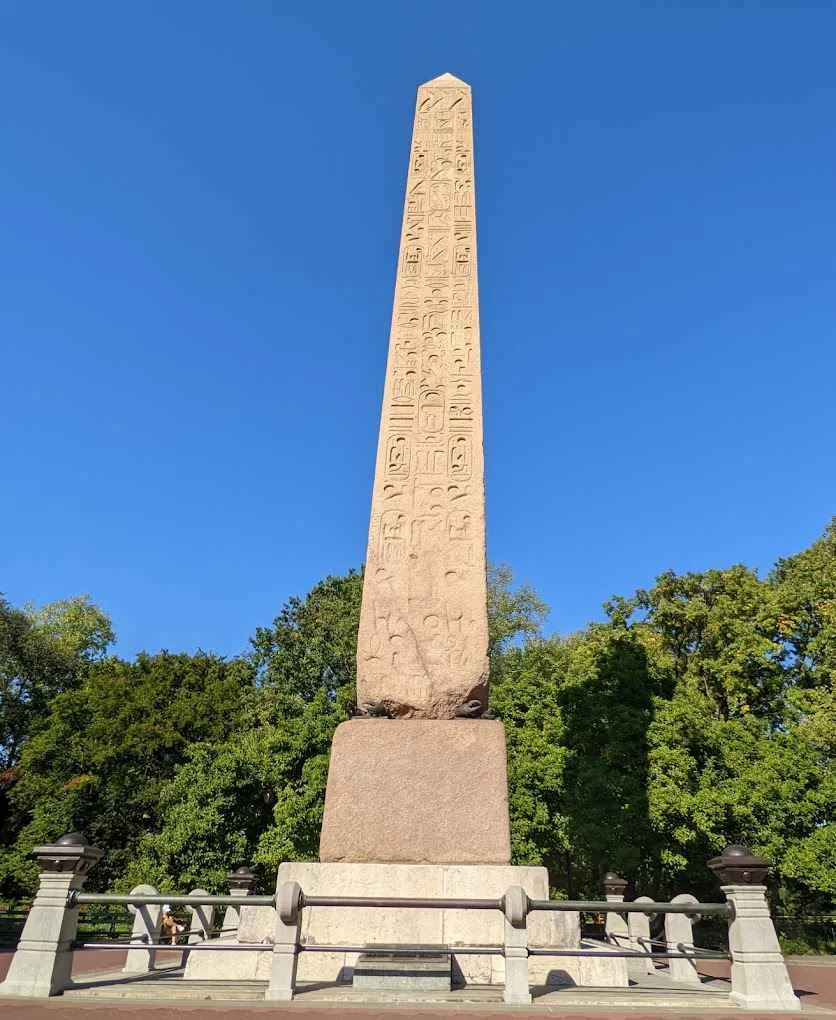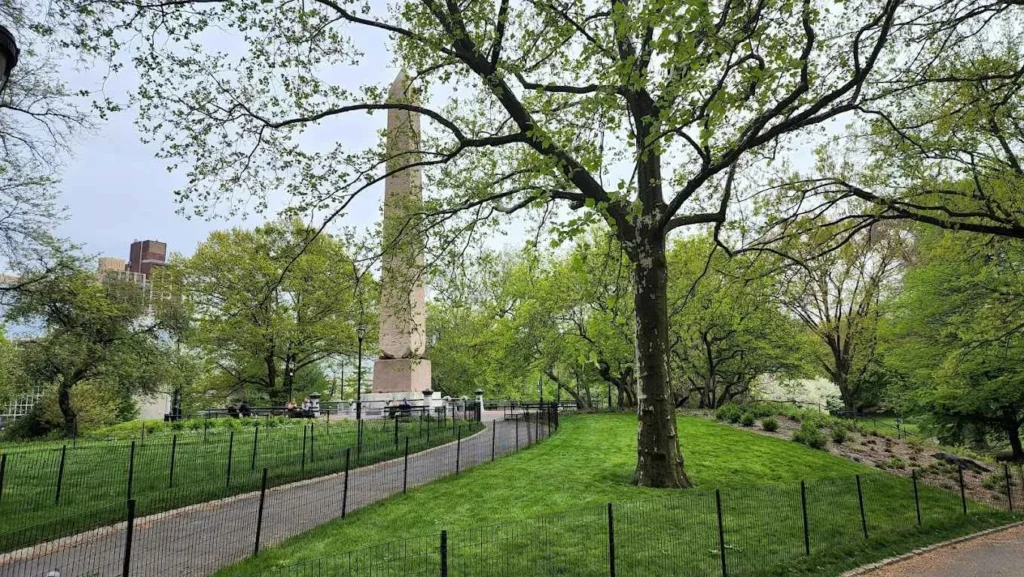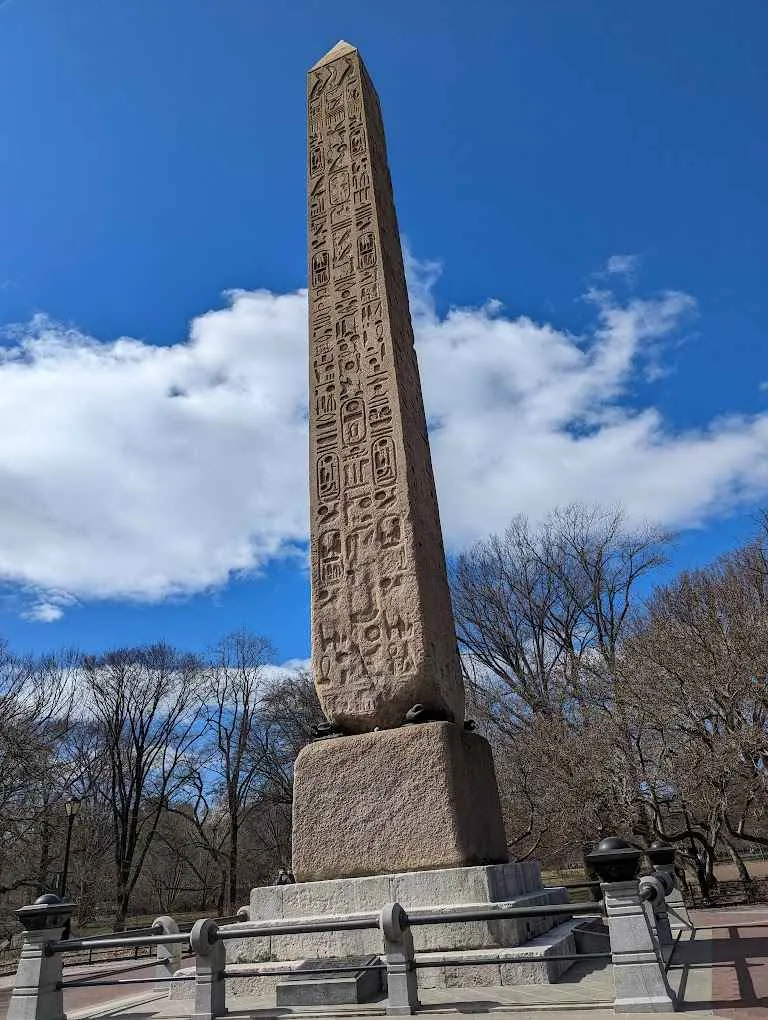In the heart of Central Park stands a historical gem known as the Egyptian Obelisk, also nicknamed “Cleopatra’s Needle”. Interestingly, Cleopatra had nothing to do with this monument, as it was carved about 14 centuries before her time. With over 3,000 years of history, there’s much to uncover, but for now, here’s a glimpse of what you’ll see when you visit.
A Sunbeam in Stone
The symbolic meaning of the obelisk remains a topic of debate among scholars, but most agree it represents the Earth’s connection to the Egyptian sun god, Ra. Its elongated shape has been likened to a sunbeam, while the pyramid at its top symbolizes the first land that rose from the primordial waters in one of Egypt’s creation myths.
Hieroglyphs: A Chronicle of Three Eras
The obelisk features three columns of hieroglyphs on each side of its base:
- The central column celebrates the achievements of Pharaoh Thutmose III, who commissioned the obelisk in 1443 BCE.
- The outer columns were added three centuries later by Ramses the Great, who wanted to showcase his own accomplishments.
- Finally, in 920 BCE, Osorkon I added his name at the bottom to leave his mark.
From Heliopolis to New York: An Epic Journey
The obelisk originally stood outside a temple in the ancient Egyptian city of Heliopolis (now part of Cairo). In 12 BCE, Roman Emperor Augustus had it moved down the Nile to the city of Alexandria. To stabilize it, the Romans forged decorative iron crabs and placed them at each corner of the base. The crabs you see today are replicas; the originals are on display at the Metropolitan Museum of Art, just a short walk from the park.
A Gift, Not Stolen
Unlike many artifacts subject to repatriation debates today, this obelisk wasn’t stolen—it was gifted. In the 1870s, Ismail Pasha, the Khedive of Egypt under the Ottoman Empire, presented it to the United States. The gesture was intended to encourage American investment in Egypt at a time of strained relations with France and Britain.
New York was eager to accept the gift. By the late 19th century, the city was emerging as a cultural and financial hub. Paris and London already boasted their own obelisks, and acquiring one for New York signified its ambition to gain cultural prestige.
How to find the obelisk?
Located in Central Park, directly behind the Metropolitan Museum of Art. Enter the park slightly north of E. 79th St. at 5th Ave./Central Park West. Take the pathway behind the Museum leading to the obelisk.




